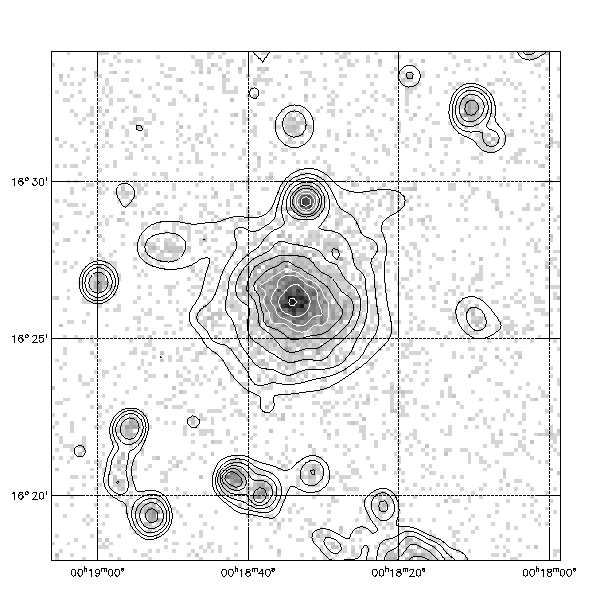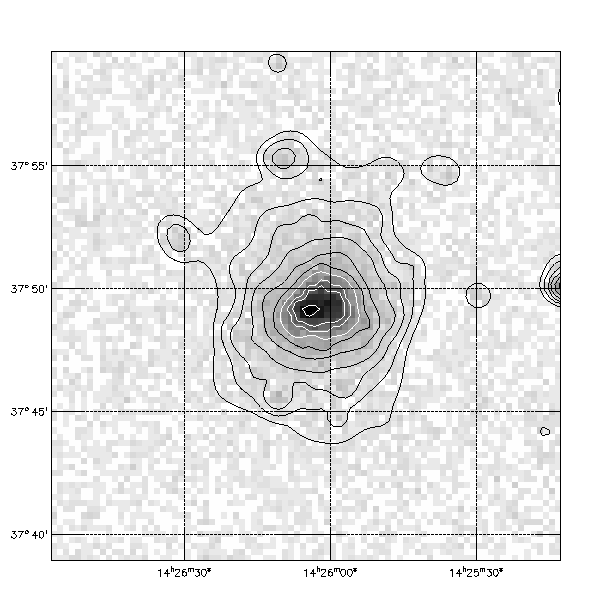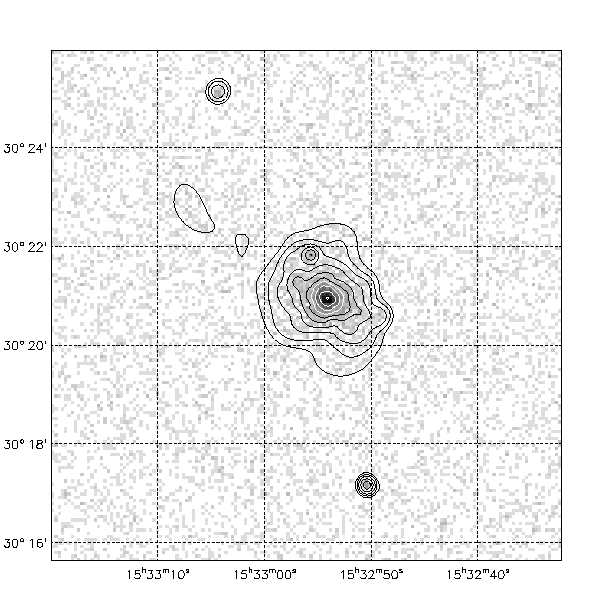 Photo Credit: John P. Hughes, Rutgers University
Photo Credit: John P. Hughes, Rutgers University
A portion of the 0.4-2.4 keV ROSAT PSPC X-ray image centered on the distant cluster CL0016+16 (z=0.5455). Coordinates are quoted in epoch J2000. The grayscale shows the number of raw counts detected in each 7.5" square pixel ranging from a minimum of 1 (in source-free regions of the map) to a peak of 38 (near the center of the cluster). The contours show the background subtracted, exposure corrected data after adaptive smoothing. Contour levels start at 2.4E-4 cts/s/sq-arcmin (approximately the average background level near the center of the detector) and increase by multiplicative factors of 1.75. The bright X-ray source immediately to the north of the cluster is an AGN, QSO 0015+162, at a redshift z = 0.554 (Margon et al. 1983). The recently discovered poor cluster, RX J0018.3+1618, that is a companion to CL0016+16 (Hughes et al. 1995), is partially visible to the southwest.
 Photo Credit: John P. Hughes, Rutgers University
Photo Credit: John P. Hughes, Rutgers University
ROSAT PSPC image of Abell 1914 (z=0.1712) from a 9 ks observation carried out in July 1992. Contours show the data after background subtraction, exposure correction, and adaptive smoothing; grayscale shows the raw counts in 15" x 15" pixels (the peak number of counts is 141). Contour levels start at a value of 7.65e-5 cts/s/sq-arcmin and increase in multiplicative steps of 1.77 to a maximum of 0.0137 cts/s/sq-arcmin near the center of the cluster.
 Photo Credit: John P. Hughes, Rutgers University
Photo Credit: John P. Hughes, Rutgers University
ROSAT HRI image of RX J 1532.9+3021 (z=0.345) from a 22 ks observation carried out in August 1996. Contours show the data after background subtraction and adaptive smoothing; grayscale shows the number of raw counts in 4" x 4" pixels (the peak number of counts is 49). Contour levels start at a value of 1.5e-3 cts/s/sq-arcmin and increase in multiplicative steps of 1.86 to a maximum of 0.41 cts/s/sq-arcmin near the center of the cluster. This central surface brightness is remarkable. For comparison, the central surface brightness of the luminous rich cluster CL0016+16 in the PSPC is 0.047 cts/s/sq-arcmin which, when converted to an HRI surface brightness, is about a factor of 25 less!
Revised December 30, 1997